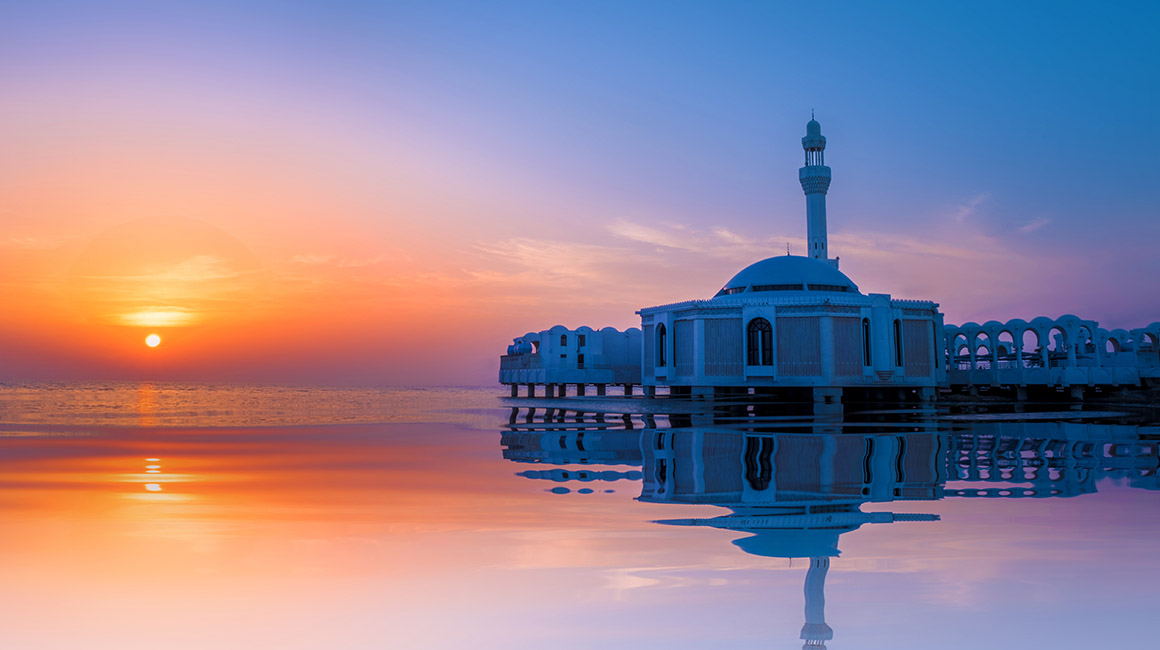The Floating Mosque: Why Jeddah’s Al-Rahmah is More Than Just a Pretty Picture
You know what? There’s just something inherently magnetic about structures that seem to defy nature—places that feel like they’re hovering between two worlds. And if you’ve ever been to the vibrant, coastal city of Jeddah in Saudi Arabia, you’ve likely seen one of the most stunning examples: the Al-Rahmah Mosque. Often simply called the “Floating Mosque,” it’s a genuine sight to behold, a beautiful blend of traditional Islamic architecture and modern engineering marvel. But let me tell you, its real pull isn’t just about its location; it’s about what it represents.
A Design That Makes You Do a Double Take
When people first see Al-Rahmah, their immediate question is almost always, “Wait, is it actually floating?” Honestly, the way it’s situated right on the edge of the Red Sea, built on stilts and concrete piles, especially during high tide, it really does give that illusion. It was constructed in 1985, which, in the grand scheme of Islamic historical architecture, makes it quite a contemporary build.
-
Its Vibe: Imagine brilliant white stone contrasting with the deep blue sea and sky. It uses a lot of that traditional Islamic geometrical flair, yet the overall effect is remarkably modern and airy.
-
The Details: Look closely at the dome. It’s covered in turquoise mosaics—a stunning, subtle nod to the color of the sea itself. And those sweeping arches? They just frame the water perfectly. It’s a photographer’s dream, truly.
Here’s the thing about modern religious architecture: it sometimes feels disconnected from the millennia of history that came before. But Al-Rahmah manages to feel both brand new and ancient at the same time. It captures the essential spirit of tranquility you expect from a masjid (mosque) while fully embracing its setting. It’s a gorgeous piece of work, plain and simple.
Now, let’s talk context. Building a mosque over the water isn’t just a stylistic choice; it holds a deeper, emotional resonance, particularly in a coastal city like Jeddah. Historically, the sea has represented both sustenance and peril—it’s a powerful, unpredictable force.
Placing a house of worship right in that environment speaks volumes about faith and resilience. It’s almost a visual metaphor for seeking solace and connection with the divine amidst the unpredictable currents of life. You can feel a sense of serenity there that’s genuinely different from an inland mosque. It’s subtle, but powerful.
And speaking of context, Jeddah itself is the historical gateway to Mecca. Pilgrims arriving for the Hajj or Umrah often passed through here. This city has always been a place of transition, welcoming people from all over the globe. So, a mosque that sits open, facing the horizon, feels incredibly appropriate for a city with such a deep cultural and spiritual legacy. It’s not just a local spot; it connects to a massive, global movement of faith.
The Experience: Finding Your Own Peace
Honestly, whether you’re a devoted Muslim seeking a quiet place to pray, or a history buff interested in modern Islamic design, the Al-Rahmah Mosque delivers. The gentle lapping of the waves against the pillars creates an atmosphere that’s simply unmatched.
I remember reading once that the goal of all great architecture is to elevate the human spirit. If that’s the metric, Al-Rahmah is a spectacular success. It isn’t trying to compete with the sheer historical weight of, say, the Grand Mosque in Mecca or the Prophet’s Mosque in Medina—you couldn’t, right? Instead, it uses its unique position to offer a different kind of spiritual experience: one that’s open, airy, and deeply peaceful.
When the sun sets, casting those incredible golden and purple hues over the water and the white stone, you realize why this place has become one of Jeddah’s true iconic landmarks. It’s not just the structure; it’s the feeling you get standing there—that feeling of being perfectly centered between the majesty of human devotion and the immensity of nature. And honestly, isn’t that what we all look for in a place of worship, or really, any great historical site? That deep, comforting sense of connection?


